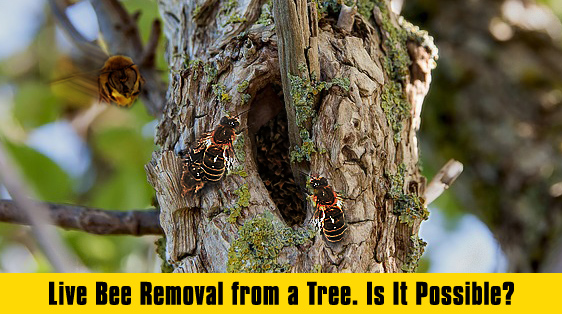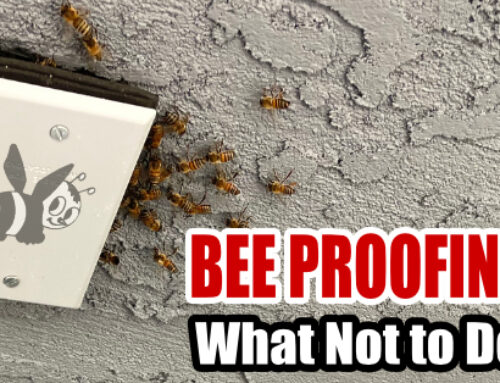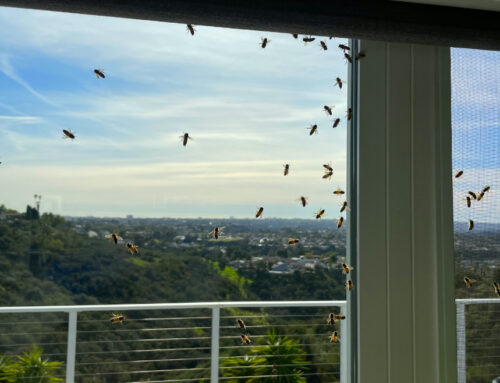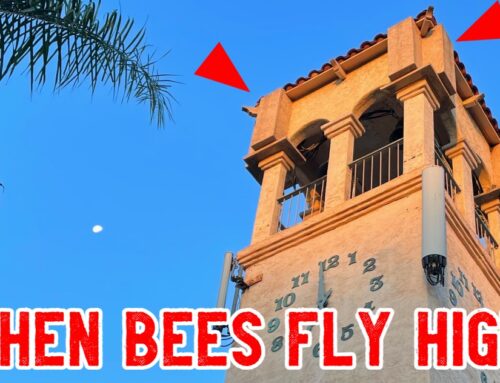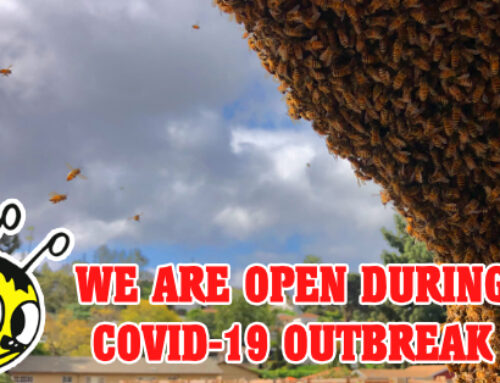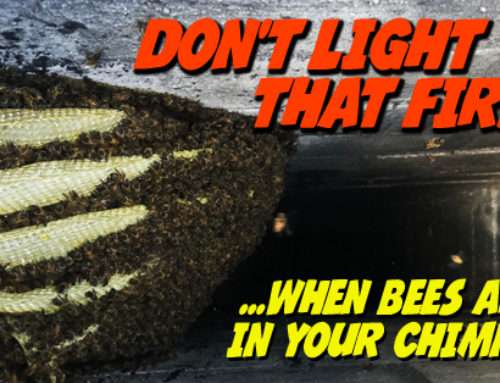Bees love to land in trees. It’s one of the most common places where we remove swarms. When a swarm lands on the branch of a tree, it’s usually easy to remove and relocate the colony. Unfortunately that’s not always the case. Sometimes a live hive removal from a tree can be nearly impossible.
Take, for example, when a swarm establishes a hive under the roots of the tree. Unless you want to uproot the entire tree, there really isn’t a way to remove the hive alive. Height can also present difficulties when attempting a live bee removal. The higher up the swarm or hive, the more difficult it is to perform a live removal.
Another tricky area is when bees build a hive in a knot hole. Unless the knot hole of the tree is large enough to gain access to the entire hive, it is very difficult to remove live. If you don’t care whether or not the tree survives, it might be possible to cut the tree open to gain access to the hive. The problem with this is that it can be dangerous to use power tools near an active bee hive.
Now some people say a Trap-Out device can be used to remove bees live from the knot hole of a tree. It has been our experience that this device is not a good solution. Most of the time the device can not be attached in an effective manor. The surface of a tree is typically uneven and porous. A Trap-Out device requires a flat surface.
Another thing is that there are typically multiple openings where the bees can get in and out of the stump. Sometimes they even enter and exit through the hollow base and/or the root system of the tree. On top of all this, you still have the problem of getting the hive out without damaging the tree
Bottom line: When bees enter your tree, don’t wait to take action. Have the bees removed by a professional before they have time to make a hive. Doing this keeps the cost down and increases the chances that the bees can be saved.

